Safeguarding Against Cyber Threats: Insurance for Financial Firms
Safeguarding Against Cyber Threats: Insurance for Financial Firms
“54% of organisations have experienced a cyberattack in the last 12 months, and 52% have observed an increase in cyberattacks compared to the previous year” (Varonis, 2023). This data not only underscores the relentless evolution and escalation of cyber threats but also highlights the pressing need for robust cyber defences and insurance strategies, particularly for financial firms which are increasingly in the crosshairs of cybercriminals.
In the shadowy corners of the internet, cyber threats evolve at a breakneck pace, constantly seeking new vulnerabilities to exploit. Financial firms, stewards of the world’s most sensitive data, find themselves at the epicentre of this digital battleground. The stakes? Not just financial assets, but the very trust upon which these institutions are built.
Enter the hero of our story: Cyber insurance. In an age where digital threats can emerge from any corner of the globe, insurance isn’t just a safety net—it’s a critical component of a comprehensive cybersecurity strategy. Yet, as the narrative unfolds, one finds that navigating this realm is no simple feat. Through real data, harrowing tales of breaches, and the beacon of best practices, this blog aims to guide financial firms through the murky waters of cyber threats and into the safe harbour of robust protection.
The Rise of Cyber Threats in the Financial Sector
The digital transformation of the financial sector has unlocked new frontiers of efficiency and convenience. However, this evolution has not gone unnoticed by cybercriminals, who view the vast repositories of financial data as a lucrative target. According to a report by Cybersecurity Ventures, the global cost of cybercrime is expected to reach $10.5 trillion annually by 2025, with financial services being one of the most targeted sectors.
The Spectrum of Threats
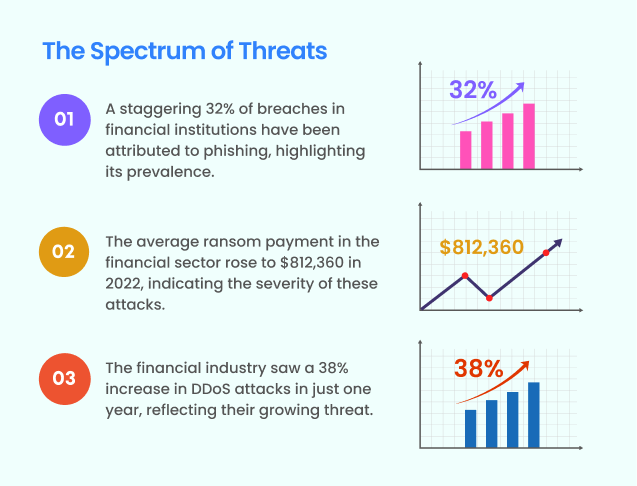
Financial firms face a myriad of cyber threats, each with its unique characteristics and potential impacts. Some of the most prevalent include:
Phishing Attacks: These involve fraudulent communication, usually emails, designed to steal sensitive information.
A staggering 32% of breaches in financial institutions have been attributed to phishing, highlighting its prevalence.
Ransomware: This type of malware encrypts a victim’s files, demanding a ransom for their release.
The average ransom payment in the financial sector rose to $812,360 in 2022, indicating the severity of these attacks.
Distributed Denial of Service (DDoS) Attacks: These aim to overwhelm a firm’s digital resources, rendering services inaccessible to users.
The financial industry saw a 38% increase in DDoS attacks in just one year, reflecting their growing threat.
A Real-World Example: The Capital One Data Breach
In March 2019, Capital One, one of the largest banks in the United States, experienced a massive data breach affecting over 100 million individuals in the U.S. and approximately 6 million in Canada. The breach exposed sensitive information, including names, addresses, credit scores, and social security numbers. The incident was traced back to a configuration vulnerability in Capital One’s infrastructure hosted on a cloud service. A single hacker exploited this vulnerability, leading to one of the most significant data breaches in the banking sector.
The Capital One breach resulted in direct financial losses exceeding $150 million, including costs related to customer notifications, credit monitoring, technology costs, and legal support. Moreover, the incident significantly eroded customer trust and raised serious questions about the firm’s cybersecurity practices.
Impact of Cyber Threats on Financial Firms
The Capital One incident illustrates the extensive consequences of cyber incidents on financial firms. Beyond the immediate financial losses, the breach inflicted lasting damage on the bank’s reputation, leading to a loss of customer trust. The incident also spotlighted the regulatory implications of cybersecurity lapses, as Capital One faced investigations by various regulatory bodies and a potential class-action lawsuit from affected customers.
Understanding Cyber Insurance for Financial Firms
The Capital One case highlights the importance of cyber insurance as a critical component of a financial firm’s risk management strategy. Cyber insurance can offer a safety net, covering costs associated with data breaches, including legal fees, forensic investigations, and customer notifications. However, the scope of coverage and the specific terms can vary widely between policies, emphasising the need for firms to thoroughly assess their risks and coverage requirements.
The aftermath of the Capital One breach also reflected on the cyber insurance market, as insurers have become more cautious, leading to higher premiums and stricter underwriting standards. This trend underscores the growing recognition of cybersecurity risks and the critical role of cyber insurance in mitigating these threats.
Case Studies: Cyber Insurance in Action
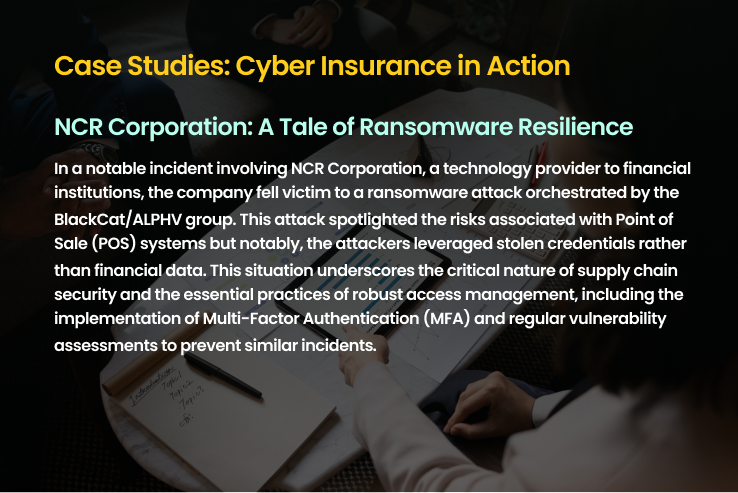
NCR Corporation: A Tale of Ransomware Resilience
In a notable incident involving NCR Corporation, a technology provider to financial institutions, the company fell victim to a ransomware attack orchestrated by the BlackCat/ALPHV group. This attack spotlighted the risks associated with Point of Sale (POS) systems but notably, the attackers leveraged stolen credentials rather than financial data. This situation underscores the critical nature of supply chain security and the essential practices of robust access management, including the implementation of Multi-Factor Authentication (MFA) and regular vulnerability assessments to prevent similar incidents.
Financial Institutions: In the Crosshairs of Cybercriminals
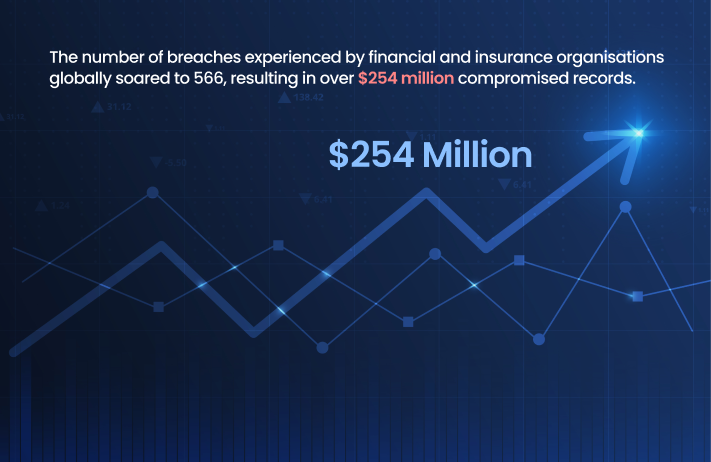
The financial sector’s vulnerability to cyber threats has become increasingly pronounced, with a significant uptick in ransomware attacks observed from 2022 to 2023. The number of breaches experienced by financial and insurance organisations globally soared to 566, resulting in over 254 million compromised records. The financial repercussions of these breaches are staggering, with the average cost of a data breach in the finance sector reaching $5.9 million. This trend highlights the paramount importance of cybersecurity investments and the adoption of advanced protective measures to safeguard the financial sector against the evolving landscape of cyber threats.
Understanding Cyber Insurance for Financial Firms
The real-world impact of cyber incidents on financial firms and the role of cyber insurance in mitigating these risks cannot be overstated. Cyber insurance policies play a crucial role in covering the financial losses and supporting the recovery process, including ransom payments, forensic analysis, legal expenses, and customer compensations. However, as the threat landscape continues to evolve, so too must the scope and coverage of cyber insurance policies to address the growing sophistication of cyber attacks and the increasing regulatory pressures on financial institutions to protect customer data and maintain operational resilience.
Last Words
The cyberattacks on NCR Corporation and the broader financial industry underscore the complex and dynamic nature of cyber threats facing financial firms today. These incidents not only result in significant financial and reputational damage but also highlight the critical need for comprehensive cybersecurity strategies that include robust cyber insurance coverage. As financial firms navigate this challenging landscape, it is imperative that they remain vigilant, continuously update their cybersecurity and insurance measures, and foster a culture of security awareness within their organisations to safeguard against the ever-evolving cyber threats.
By drawing lessons from these real-world incidents and prioritising the adoption of cutting-edge security measures and comprehensive cyber insurance, financial firms can enhance their resilience against cyber threats and protect their assets, reputation, and the trust of their customers.
Mitigata: Smart Cyber Insurance

Mitigata, a smart cyber insurance provider, integrates seamlessly with your firm’s cybersecurity strategy, offering tailored insurance solutions that adapt to the specific risks and challenges your organisation faces.
With Mitigata’s advanced risk assessment tools and proactive risk management services, financial firms can not only secure comprehensive coverage but also gain valuable insights into their cybersecurity vulnerabilities, enabling them to make informed decisions and strengthen their defences against cyber threats.
This synergy between advanced cybersecurity practices and smart cyber insurance coverage is crucial for financial institutions aiming to navigate the digital landscape securely and confidently.
Cyber Insurance: A Must – Have for eCommerce Websites
Introduction:
The allure of ecommerce is undeniable. With the click of a button, consumers can access a world of products and services, all from the comfort of their homes. For aspiring entrepreneurs, the allure lies in the promise of digital storefronts brimming with opportunity. However, beneath the surface of this digital marketplace lurk unseen dangers, poised to wreak havoc on unsuspecting businesses.
The Rising Threat Landscape for Ecommerce Businesses:
In the ever-evolving landscape of cyber threats, ecommerce websites have become prime targets for malicious actors seeking to exploit vulnerabilities and reap financial gain. From fraudulent payments to data breaches, the risks facing ecommerce ventures are manifold and ever-present.
Consider the following threats:
- Fraudulent Payments: Cybercriminals exploit stolen credit card numbers to make fraudulent purchases, posing a significant risk to ecommerce businesses. Vigilance is key to detecting and preventing such illicit transactions.
- Breach of Customer Data: The storage of sensitive customer information makes ecommerce websites lucrative targets for cybercriminals. A breach can result in devastating consequences, including reputational damage and legal liabilities.
- Business Downtime: Ransomware and DDoS attacks can disrupt ecommerce operations, leading to prolonged periods of downtime and financial losses. The inability to serve customers can have dire consequences for ecommerce businesses.
- SQL Injection: Sophisticated hackers can inject malicious code into ecommerce websites, compromising sensitive data and undermining trust. Mitigating the risk of SQL injection requires robust security measures and regular updates.
Understanding Cyber Insurance:
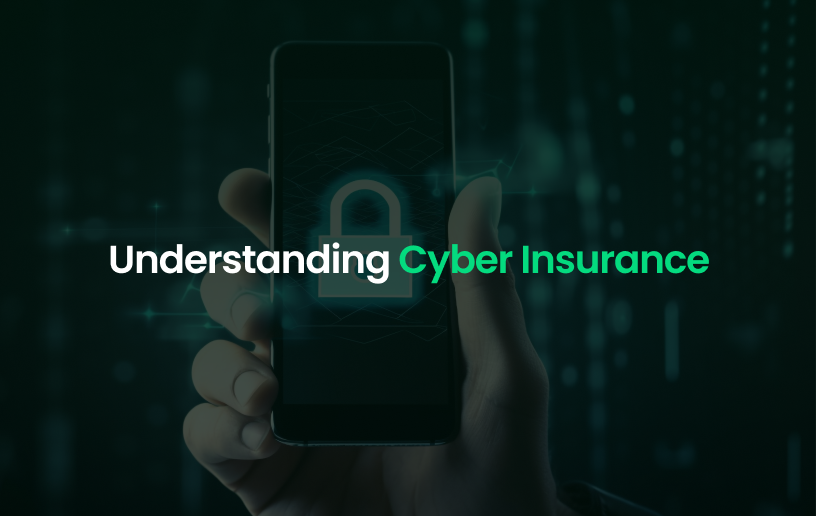
Cyber insurance, also known as cyber liability insurance, is designed to protect businesses from the financial fallout of cyber-attacks and data breaches. By providing coverage for expenses such as legal fees, customer notification, and credit monitoring services, cyber insurance offers a lifeline to ecommerce businesses facing the daunting prospect of cyber threats.
Benefits of Cyber Insurance for Ecommerce Businesses:
Investing in cyber insurance offers numerous benefits for ecommerce ventures:
- Financial Protection: Cyber insurance provides coverage for financial losses resulting from cyber attacks, helping ecommerce businesses weather the storm of unexpected expenses.
- Legal Assistance: In the event of a cyber attack, cyber insurance can cover legal fees and expenses, shielding ecommerce businesses from potential lawsuits and regulatory fines.
- Reputation Management: A cyber attack can tarnish an ecommerce business’s reputation, leading to a loss of trust and credibility. Cyber insurance often includes coverage for public relations efforts, helping to rebuild customer confidence.
- Business Continuity: By providing coverage for business interruption, cyber insurance ensures that ecommerce businesses can quickly recover from cyber attacks and resume normal operations.
Choosing the Right Cyber Insurance Policy:
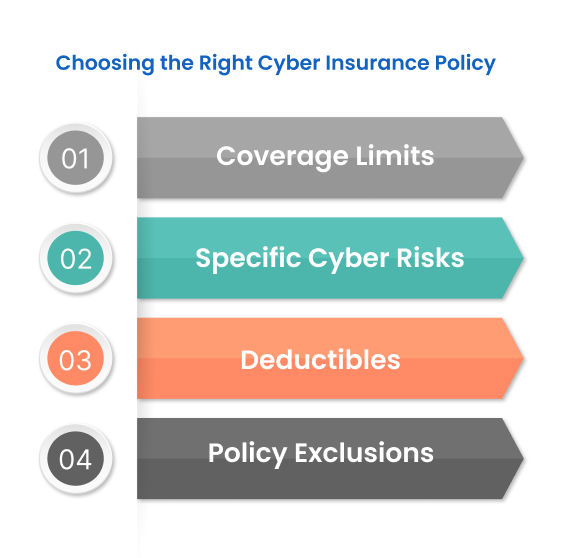
When selecting a cyber insurance policy for your ecommerce venture, consider the following factors:
- Coverage Limits: Ensure that the policy’s coverage limits align with your business’s exposure to cyber risks, providing adequate protection against potential losses.
- Specific Cyber Risks: Evaluate the specific risks facing your ecommerce business and choose a policy that offers comprehensive coverage for those risks.
- Deductibles: Understand the deductibles associated with the policy and weigh them against the potential benefits of coverage.
- Policy Exclusions: Read the policy carefully to identify any exclusions or limitations that may impact your coverage.
Closing Thoughts…

Cyber insurance is an essential investment for ecommerce ventures seeking to protect against the growing threat of cyber-attacks and data breaches. By providing financial protection, legal assistance, and reputation management, cyber insurance empowers ecommerce businesses to navigate the digital landscape with confidence and resilience.
Don’t wait until disaster strikes—secure your ecommerce venture with cyber insurance today. Partner with Mitigata to fortify your defences and safeguard your ecommerce business against cyber threats. With Mitigata by your side, you can rest assured that your digital storefront is protected from the unforeseen challenges of the online world.




